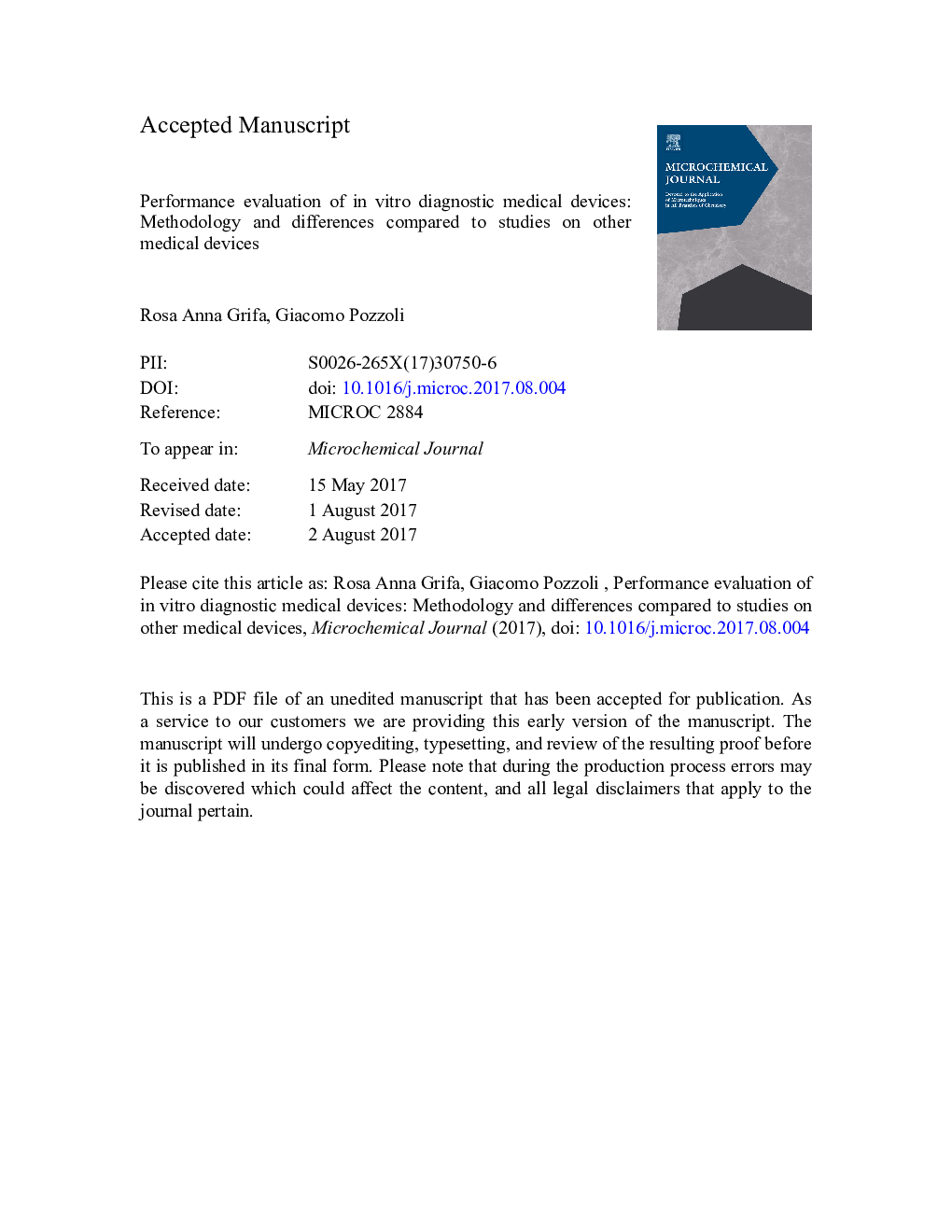| Article ID | Journal | Published Year | Pages | File Type |
|---|---|---|---|---|
| 5138981 | Microchemical Journal | 2018 | 18 Pages |
Abstract
The aim of this article is to summarize the rules governing Performance Evaluation on In Vitro Diagnostic Medical Devices (IVDs) and to outline the main differences compared to studies on other Medical Devices (MDs) in the European Union (EU). In fact, the term “Performance Evaluation” is exclusive to IVDs. For other MDs, the term “Clinical Evaluation” is used. However, the aim of both terms is the same: to demonstrate that a device meets the “Essential Requirements” of safety and performance. On the contrary, the methodology through performance evaluation for IVDs and clinical evaluation for other MDs are performed, is different: UNI EN ISO 14155:2011 only for MDs and EN 13612:2002 only for IVDs. This difference is due to the fact that IVDs, unlike other MDs, do not generally come into contact with patients. Therefore, it can be difficult to demonstrate direct harm to patients, unless the device itself causes deterioration in the state of health. Harm to patients is more likely to be indirect. However, in May 2017 two new regulations on MDs have been published, the first one concerning IVDs and the second one concerning other MDs. These new regulations may represent a real revolution. There will be very important changes to the requirements required to demonstrate clinical evidence. With regard to IVDs, clinical performance studies shall be carried out in the absence of clinical performance data. Moreover, performance studies should be in line with international standards, such as ISO 14155:2011, and the Declaration of Helsinki, and many others are the changes on the horizon.
Related Topics
Physical Sciences and Engineering
Chemistry
Analytical Chemistry
Authors
Rosa Anna Grifa, Giacomo Pozzoli,
